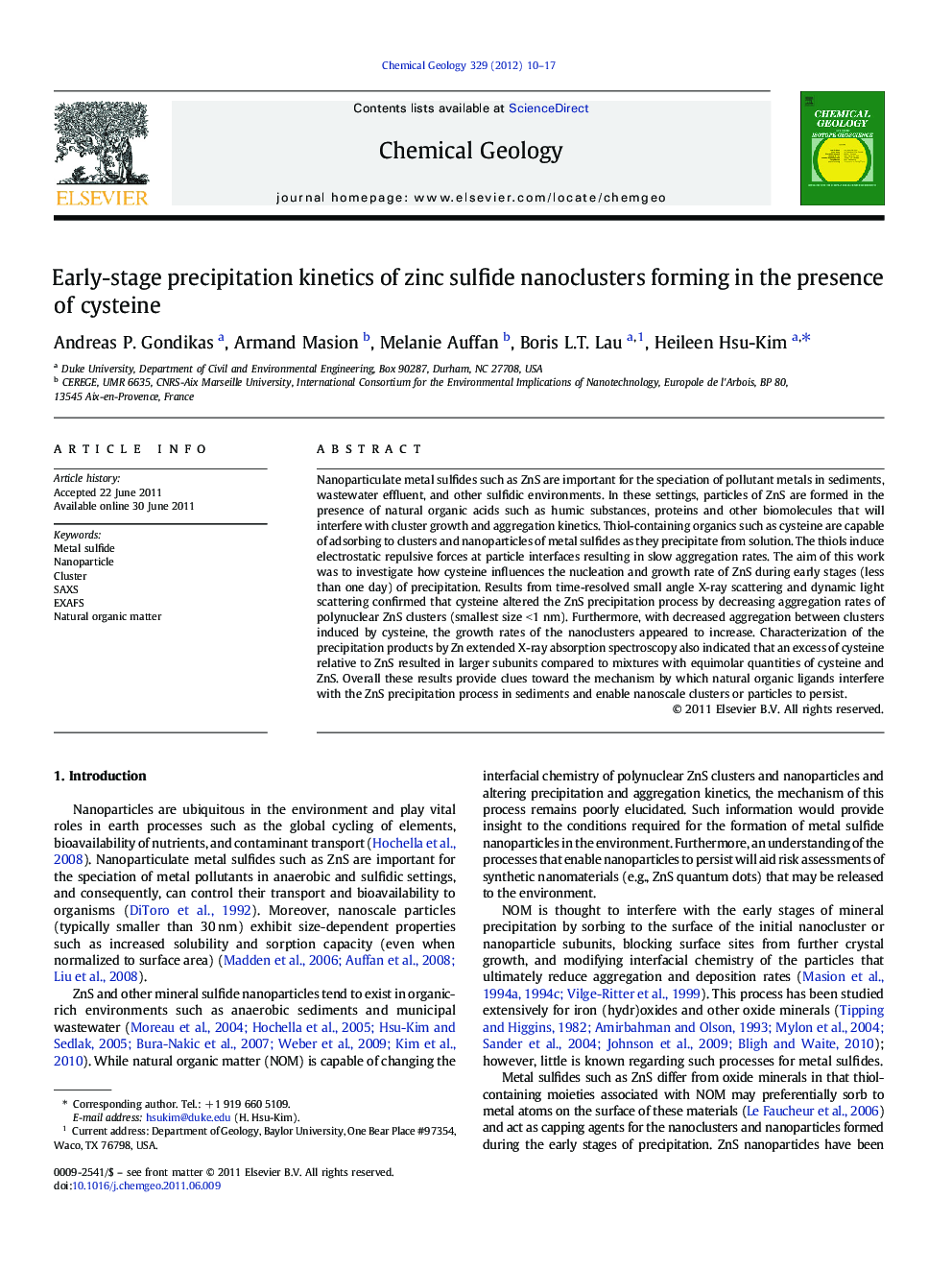| کد مقاله | کد نشریه | سال انتشار | مقاله انگلیسی | نسخه تمام متن |
|---|---|---|---|---|
| 4699315 | 1637636 | 2012 | 8 صفحه PDF | دانلود رایگان |

Nanoparticulate metal sulfides such as ZnS are important for the speciation of pollutant metals in sediments, wastewater effluent, and other sulfidic environments. In these settings, particles of ZnS are formed in the presence of natural organic acids such as humic substances, proteins and other biomolecules that will interfere with cluster growth and aggregation kinetics. Thiol-containing organics such as cysteine are capable of adsorbing to clusters and nanoparticles of metal sulfides as they precipitate from solution. The thiols induce electrostatic repulsive forces at particle interfaces resulting in slow aggregation rates. The aim of this work was to investigate how cysteine influences the nucleation and growth rate of ZnS during early stages (less than one day) of precipitation. Results from time-resolved small angle X-ray scattering and dynamic light scattering confirmed that cysteine altered the ZnS precipitation process by decreasing aggregation rates of polynuclear ZnS clusters (smallest size <1 nm). Furthermore, with decreased aggregation between clusters induced by cysteine, the growth rates of the nanoclusters appeared to increase. Characterization of the precipitation products by Zn extended X-ray absorption spectroscopy also indicated that an excess of cysteine relative to ZnS resulted in larger subunits compared to mixtures with equimolar quantities of cysteine and ZnS. Overall these results provide clues toward the mechanism by which natural organic ligands interfere with the ZnS precipitation process in sediments and enable nanoscale clusters or particles to persist.
Research highlights
► Cysteine was used to mimic heterogeneous precipitation of organic matter with ZnS.
► The association of cysteine with polynuclear ZnS nanoclusters prevented or slowed aggregation of the clusters.
► The association of cysteine with ZnS nanoclusters also increased the ripening or growth rate of the clusters.
► Results suggest that surface modifications by cysteine had prevented aggregation but did not block growth sites.
Journal: Chemical Geology - Volume 329, 3 November 2012, Pages 10–17